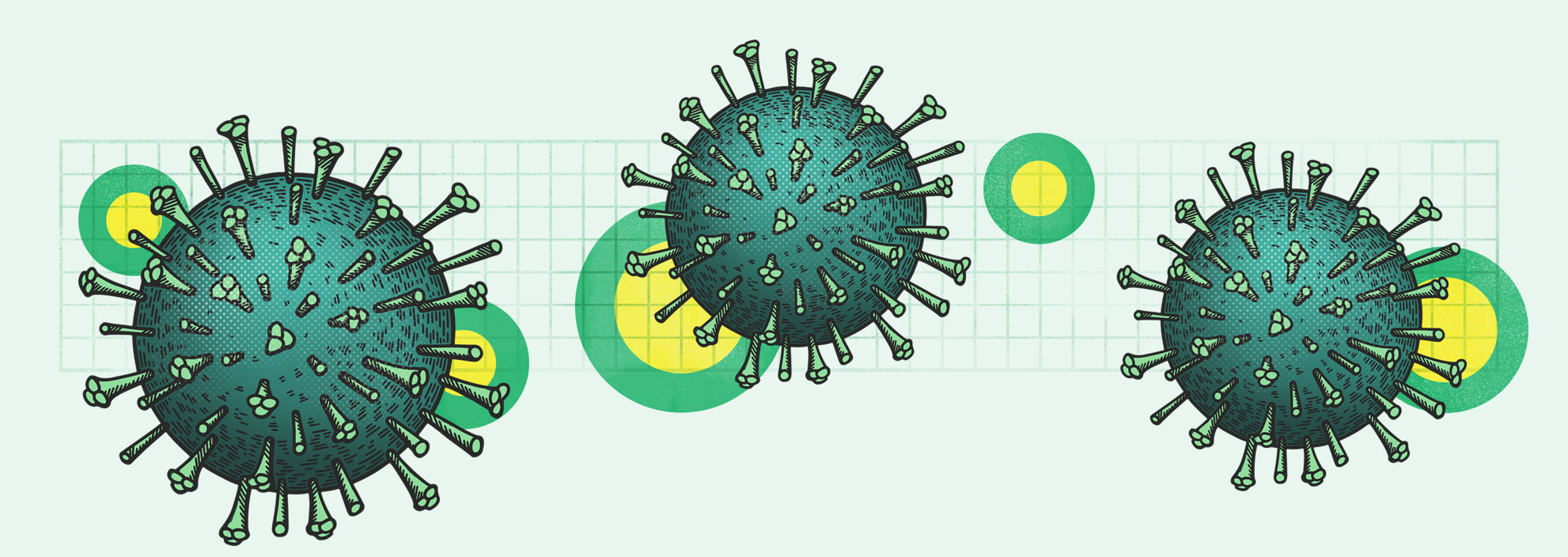Published: 11th July, 2025
Healthcare workers are at increased risk of acquiring infections and illnesses, e.g. influenza, COVID-19, due to their occupation.1 Vaccination can protect against the development of some diseases and reduce the chance of serious illness if infected. Certain vaccine-preventable diseases, such as measles, mumps and pertussis, are less commonly encountered but still important to be protected against. Vaccination of healthcare workers may also reduce the risk of transmission of infection to vulnerable patients, and is likely to reduce the spread of disease during community outbreaks.1
There is a baseline set of vaccinations recommended for all staff working in a healthcare setting; additional vaccination requirements depend on the specific area of work and exposure risks (see: “Vaccinations recommended for staff working in healthcare”).1 All adults should also be up to date with age-appropriate National Immunisation Schedule vaccines.1
Lead by example. Healthcare professionals are a trusted source of vaccine-related information, and endorsement of vaccination by them is a powerful factor in influencing community vaccination rates.2–4
A focus on influenza vaccination
The benefits of influenza vaccination for
healthcare professionals on reducing personal disease risk are well established. It can also lead to reduced work absences, and therefore fewer resource constraints and less of an impact on patient care. It is uncertain to what extent influenza vaccination among healthcare professionals affects patient outcomes, as there is mixed evidence that it reduces transmission of influenza to patients.5, 6 However, it is still best practice to be vaccinated against influenza.
A 2025 Cochrane review concluded that the effect of vaccinating healthcare workers on influenza-specific outcomes (e.g. laboratory-confirmed influenza, hospitalisation or death due to lower respiratory tract infections) in older people living in long-term care facilities is uncertain.7 There was a small decrease in all-cause mortality observed, but the authors note that this was not linked to a reduction in influenza-specific outcomes.7 Further high quality studies are needed to determine conclusively whether vaccinating healthcare workers prevents influenza in patients.
Influenza coverage among healthcare workers in New Zealand
Health New Zealand, Te Whatu Ora, funds influenza vaccination for staff and strongly recommends and expects that all healthcare workers receive annual influenza vaccination.1 The immunisation target is for 80% of Health New Zealand employed workers to be vaccinated against influenza.8
Influenza vaccination among Health New Zealand staff is low
Influenza vaccination uptake among staff who work in a Health New Zealand district facility (formally known as district health boards) was increasing over time, prior to the COVID-19 pandemic.9 A peak coverage rate of 77% was reported in 2020.9 However, since then, rates have been falling and in 2024, influenza vaccination coverage among healthcare professionals was only 53% (52,013 staff); a 2% decline since 2023.10 Rates were highest among doctors (59%) and nurses (53%), and lowest among midwives (41%).10
Influenza vaccination is improving among non-Health New Zealand healthcare professionals; costs can be claimed
Increased uptake of influenza vaccination by non-Health New Zealand employed health and disability workers is also a goal of the Influenza Programme. To help support this, eligible employers, including primary care practices, can claim the cost of administering influenza vaccines to patient-facing staff. Further information is available from: www.tewhatuora.govt.nz/for-health-professionals/clinical-guidance/diseases-and-conditions/influenza.
For non-Health New Zealand staff, a total of 20,826 influenza vaccinations were claimed for in 2024; a 23% increase from 2023.10 Most influenza vaccine claims in this group were submitted from aged residential care (34%), general practice (23%) and pharmacy (14%).10

Healthcare workers must be protected from diseases that they encounter while working, such as varicella zoster, measles, mumps, rubella, hepatitis B, pertussis, COVID-19 and influenza.1 The Immunisation Handbook recommends specific vaccinations (Tdap, MMR, varicella, hepatitis B, influenza and COVID-19) for staff working in healthcare, including non-clinical staff who work in areas where patient care is administered, e.g. receptionists, cleaners (Table 1).1 Some healthcare organisations may have additional vaccination or serology requirements for staff depending on clinical risk, e.g. hepatitis A, poliomyelitis, meningococcal disease; check local policies for specific recommendations.
Most healthcare workers who were born in New Zealand will have received vaccinations during childhood for tetanus, diphtheria, pertussis, poliomyelitis, hepatitis B and measles, mumps and rubella, or during their health professional training.1 Staff who have not received these will likely need catch-up vaccinations, unless they are considered to be immune, e.g. through serological testing or clinically proven history of disease.
Healthcare workers who were born overseas will often need catch-up vaccinations as they will have varied immunisation history depending on their country of origins’ vaccination programme.
N.B. Some catch-up vaccinations and booster doses may not be funded, and will need to be purchased by the healthcare worker or their employer.11
Table 1. Vaccination recommendations for healthcare workers. N.B. Check local employment policies for additional vaccination recommendations or requirements.
| Disease/vaccine |
Recommendations |
| COVID-19 |
Documented evidence of the primary course (now a single dose) with one additional dose is recommended for all staff working in a healthcare setting*1
* Further additional doses are recommended and funded for people aged ≥ 30 years, people aged 16 – 29 years who are pregnant or at higher risk of severe illness from COVID-19. Additional doses are usually given at least six months apart or six months after a positive COVID-19 test.1 |
| Hepatitis A |
Hepatitis A vaccination (two doses) is considered necessary only for some staff working in a healthcare setting, e.g. laboratory workers who are exposed to faeces.1 See IMAC or the Immunisation Handbook for further advice.
If protection against both hepatitis A and B is needed, the combined vaccine, Twinrix, may be appropriate.
N.B. Most healthcare workers experience some level of risk of exposure to faeces but the risk of hepatis A is low in many patient groups, e.g. those living in aged residential care. Hepatitis A vaccination recommendations in the Immunisation Handbook are focused on occupational groups likely to be exposed to populations with a high incidence of hepatitis A, e.g. early childcare workers, or direct contact with faeces, e.g. plumbers.1 |
| Hepatitis B |
Documented evidence of three doses is recommended for all staff working in a healthcare setting1
Healthcare workers also require post-vaccination serology.1, 12 If serology shows anti-HB levels < 10 IU/L post-vaccination, give one further dose of hepatitis B vaccine and repeat serology four weeks later. Assume lifelong immunity if ≥ 10 IU/L. If repeat serology is < 10 IU/L, follow the non-responder protocol.1 |
| Influenza |
All staff working in a healthcare setting are recommended to get an annual influenza vaccination1 |
| Measles, mumps and rubella (MMR) |
Two doses are recommended for all staff working in a healthcare setting if they were born from 1st January, 1969, and do not have documentation of two MMR-containing vaccines or laboratory evidence of immunity1, 11
N.B. Most people who lived in New Zealand prior to 1969 are considered immune to measles either due to infection with wild-type measles or through vaccination.1, 13 People who lived in countries with low rates of circulating measles prior to 1969 may require further vaccination in a community outbreak.1, 13 It is recommended that advice be sought from IMAC prior to vaccinating adults born prior to 1960.1 |
| Meningococcal disease |
Meningococcal vaccination (MenB and MenACWY) is only recommended for laboratory workers who regularly work with Neisseria meningitidis cultures, or healthcare professionals in very close contact of cases with meningococcal disease1, 11 |
| Poliomyelitis |
All adults are recommended to have completed a three-dose primary course, regardless of occupation1
Booster doses (usually every ten years) are recommended for healthcare workers who are in direct contact with patients with poliomyelitis, or at increased risk of exposure, e.g. laboratory workers handling faecal specimens from people recently arriving from high risk countries1
N.B. Poliovirus has been eliminated in New Zealand, but until there is complete eradication worldwide, there remains a risk of polio entering New Zealand from people travelling from a high risk country. |
| Tetanus, diphtheria and pertussis |
Documented evidence of at least three vaccines containing tetanus, diphtheria and pertussis is recommended1, 11
Booster doses of tetanus, diphtheria and pertussis (Tdap; Boostrix) for protection against pertussis are recommended at least every ten years for all staff working in a healthcare setting (some workplaces may require more frequent vaccination, e.g. every five years)1 |
| Tuberculosis (TB) |
BCG vaccination is not indicated for adults11
All healthcare professionals are required to undergo screening for TB prior to starting employment.11 This is typically done with a risk assessment questionnaire and interferon gamma release assay (usually QuantiFERON Gold TB serology test).11 |
| Varicella |
Two doses are recommended for all staff working in a healthcare setting unless they are considered immune1
Presumptive immunity: reliable history of varicella infection, herpes zoster or characteristic rash, documented varicella vaccination or laboratory evidence of immunity or confirmation of disease.1, 11
It is recommended to check serology if there is no clear history of varicella infection as many people will be immune.1 |





